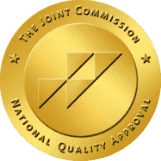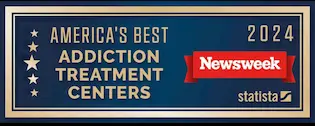Schizoaffective Disorder and Addiction
Schizoaffective Disorder and Addiction
Schizoaffective Disorder and Addiction
Unveiling the connection with schizoaffective disorder and substance use disorder.

Article Contents
What is Schizoaffective Disorder?
According to the National Alliance on Mental Illness, schizoaffective disorder (SZA), also known as schizo-affective psychosis, is a chronic mental condition characterized by schizophrenia symptoms such as hallucinations (delusions) and mood disorder symptoms such as mania and depression.1
SZA affects one’s thoughts and moods. While there is no known cause for schizoaffective disorder, research has shown that genetic and environmental factors can increase the chances of it.
Find Help Now
It is common for people with schizoaffective disorder to be incorrectly diagnosed with bipolar disorder or schizophrenia at first. SZA is not studied as much as the other two conditions, so it is often confused with them. Treatments and interventions for SZA are usually borrowed from those used for schizophrenia and bipolar disorder.
Statistics on Schizoaffective Disorder
Schizoaffective disorder is a relatively rare disease with a lifetime prevalence of about 0.3%. While men and women experience schizo-affective psychosis at the same rate, men are more likely to develop the illness at an earlier age. schizo-affective psychosis can be effectively managed with medication and different forms of behavioral therapy.
It is estimated that 1 in 200 people develop SZA in their lifetime, and most develop it during their early adulthood. People with schizoaffective disorder are at a higher risk of suffering from co-occurring substance use disorder and require integrated treatment plans to treat co-occurring conditions.1
Symptoms of Schizoaffective Disorder
The symptoms of SZA are usually severe and require close monitoring for treatment and maintenance. The symptoms can vary from one person to another, but common symptoms include:
Hallucinations: People with this schizo-affective psychosis tend to hear and see things that are not real or there.
Delusions: These are false beliefs held as truths, even when evidence proves otherwise.
Disorganized thoughts: People with this condition find it hard to keep their thoughts on track. They might provide unrelated answers to questions or randomly switch topics during conversations.
Depressed moods: People diagnosed with SZA experience feel sad, empty, or worthless.
Manic fits: Symptoms of mania often include racing thoughts, feelings of euphoria, and a drive towards risky behaviors.1
How Does Schizoaffective Disorder Impact Addiction?
Does Schizoaffective Disorder Increase the Chances of Addiction?
People suffering from severe mental illness such as SZA are more likely to become addicted to drugs and alcohol. Occasional drug use is not usually an option for people with this condition. Schizo-affective psychosis causes one to rapidly switch from casual drug use to addiction. Those with SZA rarely seek help, and when they do the addiction is often at an advanced state and harder to treat.
Does Drug Use Cause Schizoaffective Disorder?
Health care professionals have wondered which comes first: psychological disorders or substance abuse. Both conditions usually go hand and hand and can foster each other. It is believed that mental health is often a root cause for drug and alcohol addiction and vice versa.
The National Institute of Mental Health stated in a 2014 study that nearly 8 million people had experienced substance use disorder and one form of mental illness at the same time. Mental disorders often lead to drug abuse as a form of self-medication, and the same is true for schizoaffective disorder. However, self-medication will likely compound the person’s problem and worsen both issues.2
Drugs Linked to Psychosis
In some cases, a patient has no history of mental health problems, but issues arise after they begin to abuse drugs. Substance use can trigger latent psychological issues. It can be hard for people with schizo-affective psychosis to notice the symptoms in the early stages of the illness. However, taking mind-altering drugs like psychedelics can worsen symptoms. Psychosis drugs include:
- Amphetamines
- Meth
- Cocaine
- LSD (lysergic acid diethylamide)
- DMT
- Mushrooms
- Marijuana
- Alcohol
- Benzodiazepines
Types of Schizoaffective Disorder
Schizoaffective disorder is divided into two categories:
Bipolar Schizoaffective Disorder: People with bipolar SZA show symptoms of mania and major depression during the period of illness.3
Depressive Schizoaffective Disorder: People with depressive SZA show major depressive episodes during the period of their illness.3
Some people have their schizoaffective disorder categorized as mixed. Mixed SZA consists of symptoms of schizophrenia, depression, and mania.
How is it Diagnosed?
Diagnosing schizoaffective disorder is difficult because one exhibits symptoms of schizophrenia, depression, and bipolar disorder. There are two methods used for the diagnosis of schizo-affective psychosis. They are the diagnostic classification systems, International Classification of Diseases (ICD) developed by the World Health Organization (WHO) and the Diagnostic Statistical Manual (DSM) developed by the American Psychiatric Association (APA) that conceptualize mental psychopathology in mental disorders- DSM-5 and ICD-10:
SZA is one of the most misdiagnosed psychiatric disorders in clinical practice. Many researchers have proposed revisions to the diagnostic criteria used for the diagnosis of this condition, while others have suggested that the diagnosis be completely removed from the DSM-5.
DSM-5
According to the DSM-5, a person is diagnosed with schizoaffective disorder if they have had periods of uninterrupted illness and episodes of mania, major depression, or both symptoms alongside symptoms of schizophrenia. The individual must have experienced at least two weeks of psychotic symptoms without mood symptoms.4
ICD-10
According to ICD-10 data, a person is diagnosed with schizo-affective psychosis if they suffer from both schizophrenia’s symptoms and the symptoms that qualify as a mood disorder (depression or bipolar disorder) for a substantial portion of the active period of the illness; The active period of the illness has an individual suffer from delusions or hallucinations in the absence of prominent mood symptoms.5
Treating Schizoaffective Disorder as a Co-Occurring Disorder
It is hard enough to diagnose and treat schizoaffective disorder due to its similarities with other disorders. It becomes even more difficult to treat SZA combined with drug or alcohol addiction. Treating both disorders involves determining the symptoms associated with each condition and developing effective methods of treating both conditions.
A combination of treatment therapies is used to treat schizo-affective psychosis. Since every patient is different, the process is tailored to suit the needs of that individual. SZA is typically treated with antipsychotics. Most healthcare professionals do not consider therapy alone a fruitful course, and instead consider medication the first line of action.
Behavioral therapy and peer groups are considered the primary treatment for substance use disorder. Evidence shows that the effective use of medication with a dual diagnosis helps co-occurring psychotic disorders and substance abuse. A patient suffering from schizoaffective disorder and substance abuse needs to be placed in a recovery program. People with schizoaffective disorder and substance use disorder are at an increased risk of relapse for either disorder if recovery is not maintained.
Resources
- https://www.nami.org/About-Mental-Illness/Mental-Health-Conditions/SZA
- https://www.nimh.nih.gov/health/topics/substance-use-and-mental-health/index.shtml
- https://www.mayoclinic.org/diseases-conditions/SZA/symptoms-causes/syc-20354504
- https://www.elsevier.es/en-revista-revista-psiquiatria-salud-mental-486-articulo-schizophrenia-in-icd-11-comparison-icd-10-S2173505020300145
- https://www.icd10data.com/ICD10CM/Codes/SZA
Related Content
- Anxiety and Addiction
- Depression and Addiction
- Dissociative Identity Disorder and Addiction
- Trauma and Addiction




